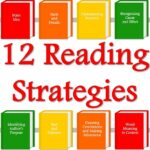Rosetta Stone, Other Language Learning Tips

When a child is developing, he is more likely to pick up foreign languages, a reality that Dora the Explorer picked up on from the beginning and was able to capitalize on thoroughly.
But when it comes to “the rest of us,” language learning is considerably more difficult, and if you need to learn another language, the answer is almost always the same: “Grab a copy of Rosetta Stone.”
To help you get the most out of this software, here are some basic tips. Let’s get started!
1. Schedule it.
One of the most important things you can do to get the most out of Rosetta Stone is to make time for it. Many people buy the software and forget about it completely. Then, they wonder why they haven’t made it is difficult to navigate. The truth of the matter is that learning another language needs to be as immersive of an experience as you can make it, and if you’re just picking at it, then you’ll never get to where you need to be. So sit down and make the time for the language of your choice. Be routine, and show up every single day, or at least several times per week.
2. Embrace repetition.
Remember your old spelling classes as a child, where you would have a list of vocabulary terms, and you had to write each three to five times before moving onto the assignments, where you would have to fill in blanks with the correct usage of the word? Those were not the most fun that you ever had in school probably, but they made you a much better speller than you would have been otherwise.
That’s what repetition can do for you.
Repetition is still one of the best things that you can do with the exercises and the vocabulary that you will encounter. Bright Hub Education recommends “starting with three sessions of about an hour, spaced out through the course of a week,” which “gives you enough time to do the longest of the lesson units in one sitting or multiple short sections together, as well as providing a break in between to let the occasional frustration that comes naturally with learning a new language subside.”
The site continued: “The longest of Rosetta Stone’s lesson units are estimated to take about half an hour, so you can always section this out into five daily half-hour sessions over your lunch break if a whole hour is just too much time.”
3. Maintain your focus.
Focus is more than cozying up to your textbook and muddling through pages until the timer goes off. There is more value in 20 or even 10 minutes of focused study time than there is in one hour of mental meandering. Anyone can commit to anything for 10 minutes, so start there. Break out the timer and jump into Rosetta Stone with the intention of learning a full “unit” of information.
It could be simple verb conjugation, vocabulary building, something more complex. Just pick it, and stick with it. When the timer goes off, review what you have learned and try to push your next session to 11 or 12 minutes, or however long you feel confident enough to keep your focus.
4. Fill the gaps in between sessions.
Another must for getting the most out of Rosetta Stone software is to fill the gaps in between sessions with additional learning materials. It is also important that you do not let your native language bleed too much into what you are trying to learn.
While Rosetta Stone is without question the best current language learning software on the market, there are other worthwhile programs on your mobile devices that you may want to throw into the mix. Apps like Duolingo, which have free options, allow you to game-ify your learning to some degree. Fit those into the down times. Also, place post-its with foreign language versions of the objects around your house. This will allow for a bit more immersion as you delve deeper into your understanding.
And as Bright Hub points out, if you do use flash cards for vocabulary building, supplement the foreign language words with images of the objects rather than English versions of the words. You don’t want to mix up the two languages.
5. Use your new language conversationally as much as you can.
Speaking with (understanding) native language speakers, who allow you to progress at your own pace will go a long way in helping you build conversational skills. But conversational skills in themselves will also help you pick up on sentence structure and other idiosyncrasies that you are just not going to be fluent at until you give them a “real world” try.
If you have family members willing to help you out on the journey, it may be easier targeting your conversational speaking on them; just keep it to around 10 sentences per day. This will help you move at a slower pace and gain the confidence to take it to the next level.
In Summary
Learning a new language can be a time consuming and frustrating experience, especially if you are doing it on your own. Programs like Rosetta Stone can help you alleviate some of those frustrations, but eventually you will need to give your new language a “test drive.” Also, it is important to continually use your skills. This will sharpen your delivery and help you keep pace with native speakers. With strong second language skills, you can be a highly valuable commodity in an increasingly global job market. Best of luck to you!








